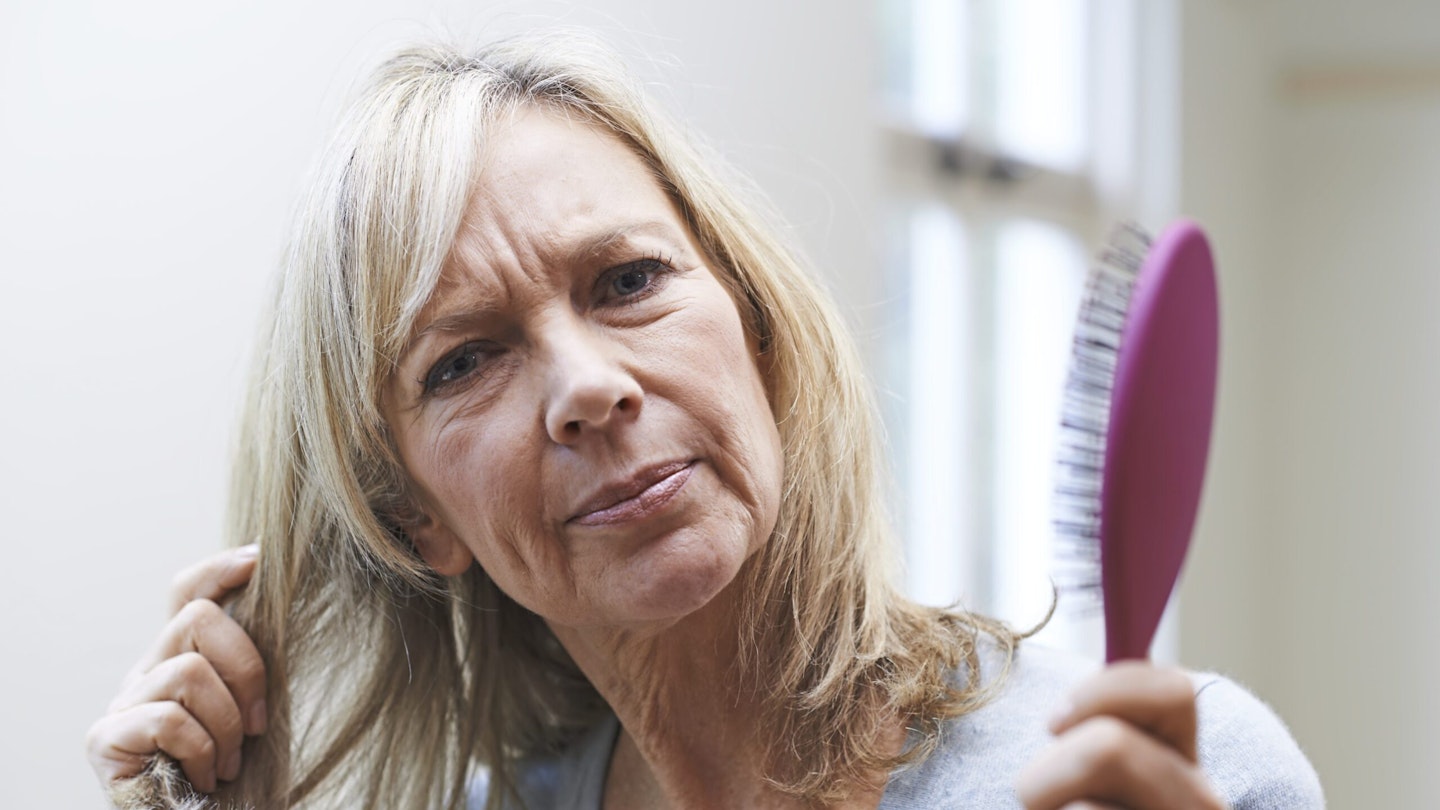It’s not just men who suffer with balding. Here’s how hair loss can impact women too…
When we think of hair loss, we often conjure up images of men, despite it affecting millions of women worldwide.
While it’s not unusual to see hair building up in your brush, or strands caught in the plughole after a shower, losing too much can be a worry.
According to the NHS, we can lose between 50 and 100 hairs a day as part of the natural hair growth cycle.
However, a significant change in the rate your hair is growing, a widening parting or thinning patches on your head, might be signs of female pattern hair loss (FPHL) — one of the most common causes of hair loss in women.
Here, Marta Teixeira of Clinihair.co.uk, a Certified Trichologist & Dermatology Specialist Nurse for the NHS, reveals all you need to know...
How it presents
Female pattern hair loss is characterised by a gradual thinning of the hair.
Marta says: ‘It usually begins in your 40s, 50s, or 60s, however it can affect women earlier, sometimes in their late 20s or 30s. Scientific evidence shows that by the age of 40, around 40 per cent of women may experience noticeable hair thinning to some extent.
‘In men, male pattern baldness typically begins with receding hairlines and crown thinning. In women, FPHL usually results in diffuse thinning on the top and midpart of the scalp, with the frontal hairline spared. Hair thinning may be more noticeable in the central part of the scalp, leading to a loss of hair density.’
Contributing factors
The exact cause of FPHL is not fully understood, though it’s believed many factors can play a part.
Marta says: ‘Ageing, hormonal changes, environmental factors and genetics are all thought to play a role in its development. Genetic predisposition plays a significant role, and if you have a family history of hair loss, you are more likely to experience it yourself.’
The menopause can play a part too.
‘A decrease in oestrogen and progesterone can influence hair growth cycles,’ says Marta. ‘These hormonal shifts often lead to thinning hair and hair loss in the post-menopausal period if there’s a genetic predisposition for FPHL.’
Other reasons for female hair loss may occur for those living with chronic health conditions — some treatments come with side effects that include the development of FPHL.
Cancer treatments, such as radiation therapy and chemotherapy are also known for causing significant hair loss. Chemo can cause hair loss all over the body, not just on the scalp. Radiotherapy only causes hair loss in the area being treated. In these cases, it usually grows back once the treatment is completed.
Prevention and treatments
Early intervention and treatment can help slow down the progression of hair loss, and in some cases, stimulate the regrowth of hair.
‘While genetic factors play a significant role, adopting a healthy lifestyle can help ensure that the body has the necessary building blocks for strong, vibrant hair,’ says Marta. ‘A diet rich in essential nutrients, including vitamins, minerals, and proteins, is important for maintaining healthy hair.
‘Avoiding excessive heat styling and harsh treatments, protecting the hair from UV damage, limiting tight ponytails or hairstyles that put excessive strain on the hair and scalp, managing stress, and quitting smoking can all improve hair health too.’
If you experience sudden hair loss and visit your GP, they may refer you to a dermatologist or certified trichologist. Treatments can include topical medication applied directly to the scalp to stimulate hair growth and slow hair loss. In some cases, oral medications may be prescribed, which can help regulate hormones related to hair loss. For very advanced cases, a hair transplant may be considered.
‘There are some fantastic temporary measures now available,’ says Marta. ‘Hair concealers that hide bald spots, volumising shampoos, or hair styling techniques can all create the appearance of thicker hair. Wigs or hair extensions can also be considered for a temporary improvement in hair appearance.
‘We all know how important good hair days are, so if you suspect you have FPHL, don’t suffer in silence. Consult a healthcare professional who will help you determine what type of hair loss you have and how best to deal with it.’
• Marta can be found on Instagram @clinihair.uk
